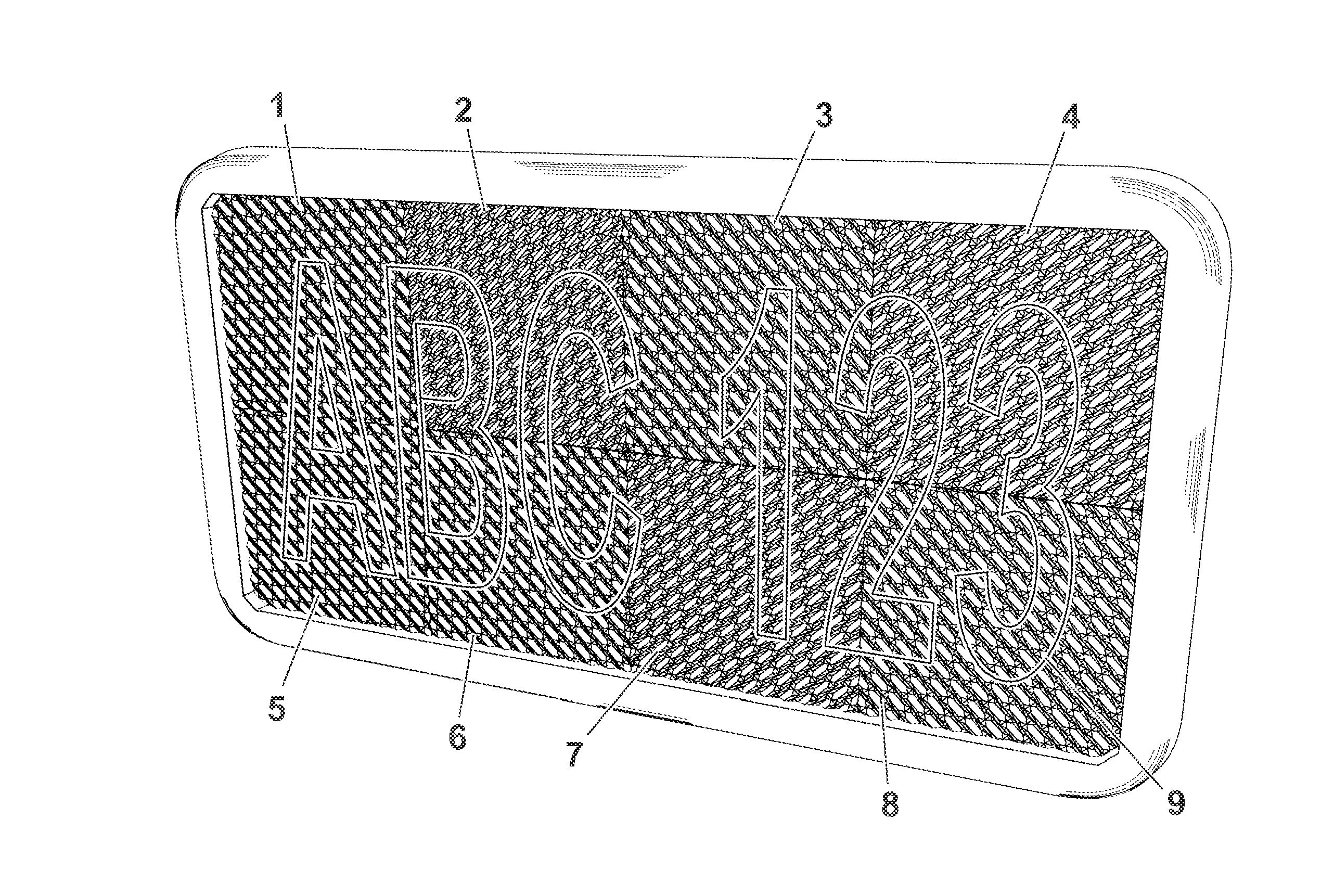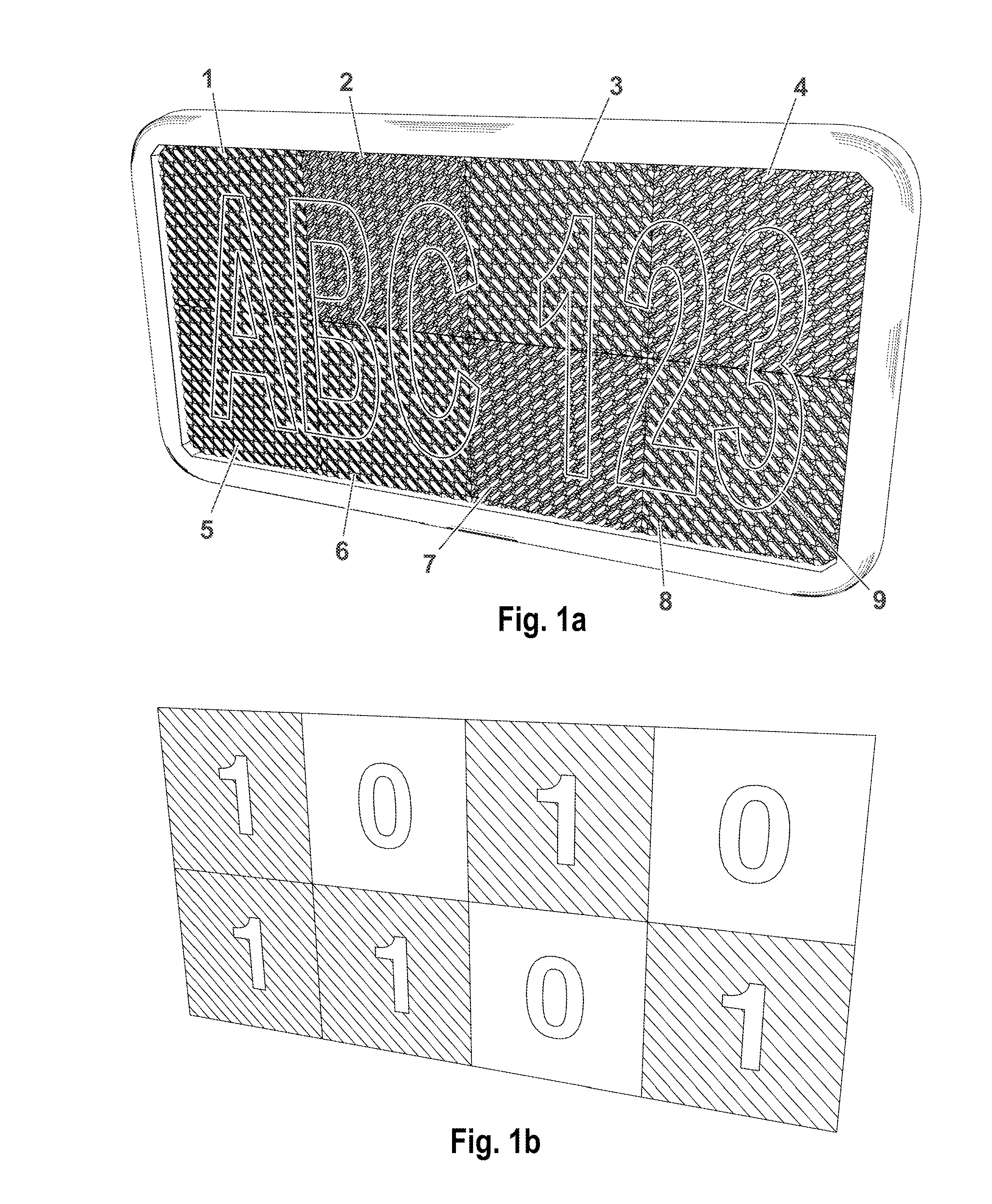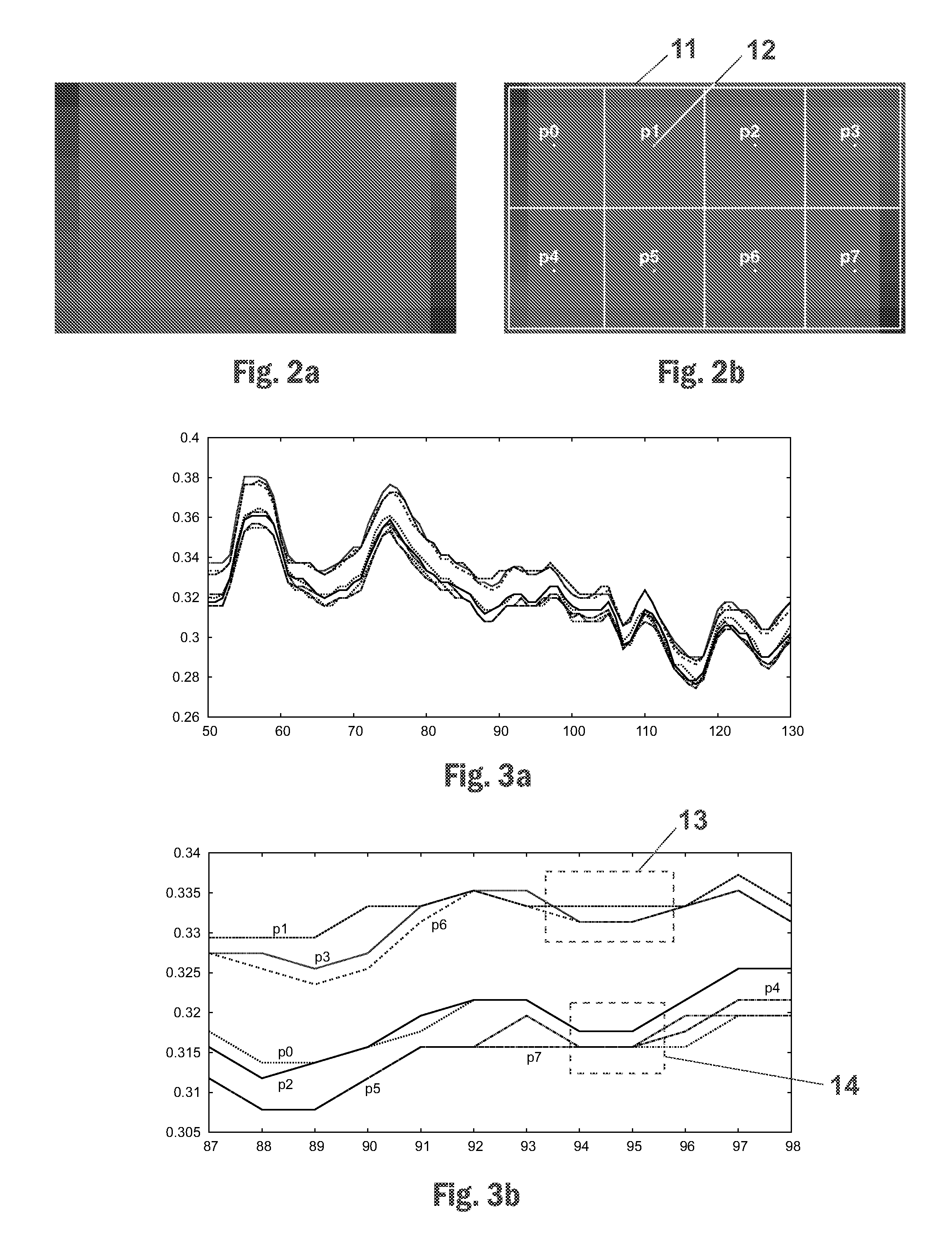System for license plate identification in low-quality video
a license plate identification and video technology, applied in the field can solve the problems of not being able, nor designed, to achieve the above goal of license plate identification in low-quality video, and not being able to address the problem of identifying license plates in video coming,
- Summary
- Abstract
- Description
- Claims
- Application Information
AI Technical Summary
Benefits of technology
Problems solved by technology
Method used
Image
Examples
Embodiment Construction
[0020]The basic idea behind this invention is to encode identifying information in a segmented light-response pattern (LRP) that covers a license plate's surface. FIG. 1a shows one possible embodiment, in which the LRP is a horizontal, 4×2 grid made of eight square segments 1 through 8, each segment assigned to one of two separate groups. Segments 1, 3, 5, 6 and 8 belong to group 1, segments 2, 4 and 7 belong to group 2. The segments have a textured surface, made of a mesh of small, angled facets, oriented either 45° to the right or to the left of the vertical, depending on which group a particular segment belongs to. Such texture has a substantial directional dependence: its shading is highly attuned to the angle of incidence of the light falling onto it. The texture yields different degrees of shading across the license plate's surface as the car moves and changes its orientation to nearby light sources.
[0021]The response to light of a particular segment at a particular moment is ...
PUM
 Login to View More
Login to View More Abstract
Description
Claims
Application Information
 Login to View More
Login to View More - R&D
- Intellectual Property
- Life Sciences
- Materials
- Tech Scout
- Unparalleled Data Quality
- Higher Quality Content
- 60% Fewer Hallucinations
Browse by: Latest US Patents, China's latest patents, Technical Efficacy Thesaurus, Application Domain, Technology Topic, Popular Technical Reports.
© 2025 PatSnap. All rights reserved.Legal|Privacy policy|Modern Slavery Act Transparency Statement|Sitemap|About US| Contact US: help@patsnap.com



